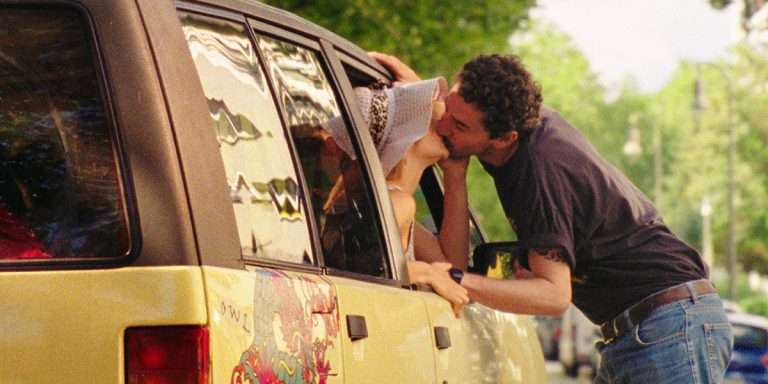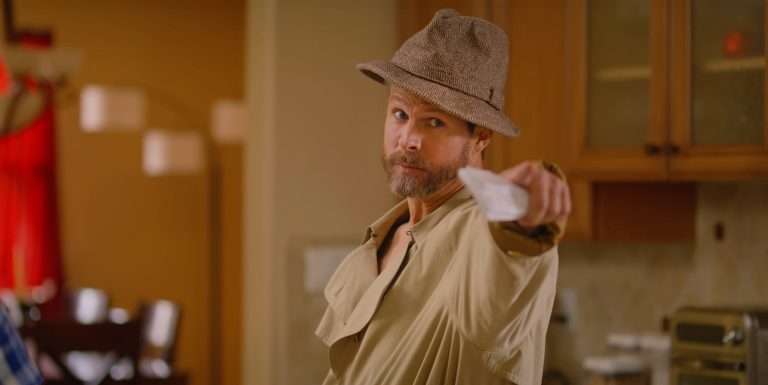On ‘Fleabag’ and the Appeal of Damaged Characters: On the 29th of December 2019, former US President Barack Obama tweeted out a list of his favorite films of the year, and in the footnotes was a sublist of TV shows that he claimed were “just as powerful as movies.” One of the series in that sublist caught peoples’ attention immediately: season two of writer-creator Phoebe Waller-Bridge’s Fleabag, whose selection was notable because it implied that Obama had also seen season one of the show. And anyone who has seen season one of Fleabag knows that Obama’s liking of the program is not, shall we say, one-sided. Fans knew that the show had, in its own way, expressed admiration for Obama long before the second season premiered.
Admiration is an excellent way of putting it since I refer here to the scene in season one where Fleabag (played brilliantly by Waller-Bridge) goes through a messy breakup with her boyfriend after he catches her masturbating to a video of Obama delivering some speech (like Fleabag after the fact, I can only recall that he was saying something along the lines of “Iraq”). Fans reacted with glee, as the idea of Obama watching that particular scene seemed hilarious (understandably). But really, the fact that the list included Fleabag at all is a testament to the strength of the show itself.
Something about Waller-Bridge’s project managed to make a former President admit to liking a show in which she tries to get off to one of his speeches. That is no small feat, and it is worth it to ask ourselves the question: what is it about Fleabag that strikes such a cord in the viewer? Is it the writing? The performances? The formal aspects of the show? The answer involves a mix of all those elements to bring a powerful character study to life. And, of course, a character study can only be as intense as the individual it profiles. As it happens, the woman at the center of Fleabag is one of the most fascinating fictional characters of this golden era of television.
So, what is it about that woman that makes for such great TV? Well, for starters, she is one of the funniest screen presences of the last decade. The titular character is many things (a person with a addiction for sex, a depressive, a nihilist), but above all, she is funny, and the writing on Fleabag never loses sight of that core value. All the actors here have a great sense of comedic timing, but Waller-Bridge delivers lines with a style that defines the show. From her very first punchline (“Do I have a massive arsehole?”), it’s clear to the audience that they’re watching a gifted comedic performer.
It certainly helps that Waller-Bridge (who has written every single episode of the show) takes an anything-goes approach to humor. Fleabag certainly isn’t above provocation, and it’s notable how often it pushes its jokes into the uncomfortable realm. Nothing is sacred in comedy; Waller-Bridge’s writing takes that old adage to heart. From the near-constant sex jokes to the light-hearted exploration of various characters’ traumas, the viewer is often left wondering whether they should be laughing at the material. That’s the spirit of Fleabag’s personality; everything is a joke to her because it would be really depressing if it weren’t.
That brings us to another part of what makes the character so interesting: the sadness belying her tremendous sense of humor. While the lascivious jokes certainly keep the show watchable on a moment-to-moment basis, it is the underlying misery that pulls us into the character’s interiority. At her core, Fleabag is a deeply sad woman, and it is a testament to Waller-Bridge’s writing that the show is funny despite the nihilistic outlook of its main character. Tragedy walks hand in hand with comedy, after all (or, as Waller-Bridge puts it: “They are both sides of the same squirrel.”). Without that element, the surface-level pleasures of the show would quickly wear thin.
And when those parts of the program surface, they manifest as some of its most affecting scenes. I speak here of sequences like the ending to the season one finale (where Fleabag breaks down in front of the Bank Manager (Hugh Dennis)) or the confession to the priest (Andrew Scott) in season two. Moments like these give us incredible insights into Fleabag as a character, allowing the audience to realize that most of what she presents to us is a front, a facade to conceal the genuine hurt inside her.
Waller-Bridge is well aware of the importance of such scenes. She has spoken about how damaged characters offer the viewer “a glimpse of something honest, and that’s always attractive.” It’s easy to explain why Fleabag makes for such a compelling character then: her vulnerability is deeply felt and utterly relatable. Her preoccupation with sex is part of a bid to distract herself from how she’s actually feeling, and we only realize how she’s feeling once the jokes finally run dry. We see that in the first episode of the entire series when Fleabag visits her father late at night and delivers a monologue that’s shockingly full of self-hate. It’s revealing and immediately intriguing, contradicting everything she’s told us so far.
Of course, no discussion of Fleabag would be complete without discussing how its central figure speaks to the audience directly. Her glances at the camera, winking, glaring, and laughing, are iconic at this point, and it’s hard to cite an example of a more enjoyable fourth wall breakage. Apart from endearing her to us, Waller-Bridge’s gleeful demolition of the fourth wall is a daring formal exercise that’s incredibly effective in giving the viewer a stake in the character’s development.
Throughout the series, the directors (Tim Kirkby for the pilot and Harry Bradbeer for everything else) regularly place us at Fleabag’s shoulder, allowing her to confide to the audience in a way that feels personal. By giving us such a subjective view, the show makes the viewer a participant in the world, forcing them to feel involved in the proceedings. It is difficult not to feel awkward when Fleabag has to talk to Belinda about the misplaced award, not to feel angry when Martin kisses her at the party, or not to feel embarrassed when Fleabag looks too chic at her mother’s wedding. Once that happens, it becomes near impossible not to care about where Fleabag will end up. The viewer is her closest friend, her staunchest ally, always there for her to report to.

When you think about it, that is a deplorable state of affairs for the character to be in. The subtext of the show’s style is another crucial piece of the puzzle of Fleabag–without it, we simply wouldn’t care about her as much as we do. Waller-Bridge has spoken about this, saying that Fleabag is always performing for the camera to “distract both herself and the audience from her misery.” Try to imagine a version of the show without the constant winking at the camera–it would be unbearable in its miserablism. The fourth wall breaking allows the writing to strike a delicate balance and, in the process, offers the viewer an intimate view of the character’s interior world (which is so often misleading about the reality of the exterior).
It’s worth noting that the play that the TV serial is based on does not involve any direct addresses to the audience–these formal elements have been placed in the show to replace the intimacy that watching a live performance provides. It is a great, arguably more effective, ploy to gain the audience’s attention. Once the show is able to establish that connection between the viewer and Fleabag, it has complete control over their heartstrings.
Waller-Bridge is not one to waste that control, either. If we have established anything through this essay so far, every element of Fleabag’s design is meant to place you as close to the character as possible. Once you’re with her, you’re with her. It becomes easier to stomach her (many) faults, understand her infuriating mistakes, and empathize with her consistent misery. Ultimately, the show becomes a play for empathy, and it does that by giving us an uncomfortably close perspective on the story (the consistency of this only makes moments like the one where Fleabag pushes the camera away while having sex with the priest all the more surprising).
Not everything is made crystal clear to us, of course. There is a certain amount of mystery to Fleabag as well. Take the recurring motif of the headless sculpture, the mysterious appearance of the fox in the season two finale, or the enigma of Josh always asking, “Where’s Claire?” The writers purposefully leave these few threads dangling, tasking the viewer with making sense of them given the clues the writers have provided. As much as we see Fleabag grow and come to terms with her trauma and lot in life, the show has no easy answers for how that trauma will be processed. It is not simply a matter of finding a loving partner or stealing a statue that resembles your mother’s naked body (if only it were).
In the end, Fleabag realizes that she has to withdraw from the interior world she’s constructed for herself, step out into reality and tackle it knowing that some past traumas never fade (which is why she steals back the statue). She knows there is hope for her yet, and hence leaves the audience with a wave and cautious hope for the future. That is part of why her journey also feels so authentic to us. The idea of the finale is that even someone as damaged as Fleabag has the capacity to grow. Wouldn’t we all love to believe the same of ourselves?



![Long Weekend [2021] Review: A Unique, Albeit Unfulfilling, Rom-Com](https://79468c92.delivery.rocketcdn.me/wp-content/uploads/2021/08/Long-Weekend-1-768x432.jpg)


